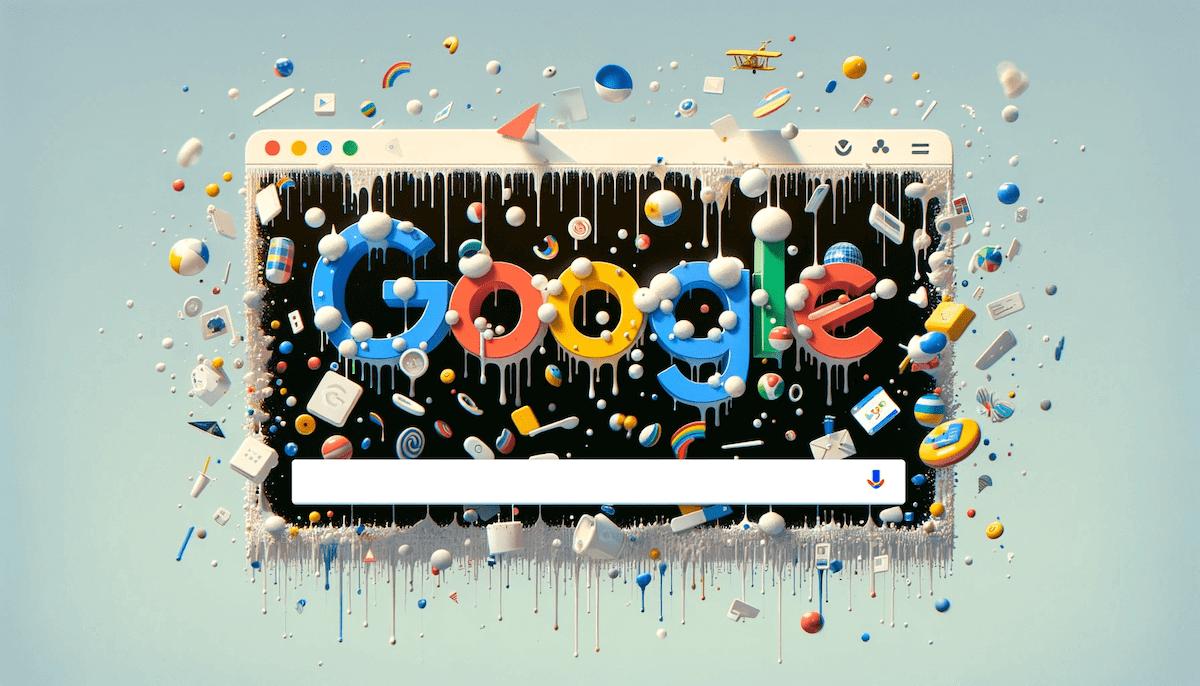Google Gravity is an interactive Easter Egg that drops the Google interface under the effect of gravity. Find out how it works and test it now!

Google Gravity: a hidden Easter Egg that defies the laws of gravity
Have you ever seen the homepage of Google collapse before your eyes? That's exactly what Google Gravity, a fascinating web experiment that transforms the classic interface of the search engine into an interactive playground. But how does Google Gravity work? Why this Easter Egg Does it amuse Internet users so much? Dive into the captivating world of Google Gravity and find out how to use it today.
Google Gravity: What is it exactly?
Developed in 2009 by Ricardo Cabello (aka “Mr.doob”), Google Gravity is an alternative version of the famous search engine where all the elements of the page collapse under the effect of gravity. Unlike the ordinary interface, here everything is subject to the laws of physics : the buttons, the search bar and even the logo of Google fall and react to your mouse movements.
This project demonstrates the capabilities of technologies HTML5 and JavaScript, while providing a fun and interactive experience. It is not just a simple Easter Egg, but a true technological feat that continues to amaze users.
How do I activate Google Gravity?
Would you like to try Google Gravity by yourself? Follow these simple steps:
1️⃣ Open a web browser (Chrome, Firefox, Safari or Edge).
2️⃣ Type “Google Gravity” in the search bar.
3️⃣ Click on “I’m feeling lucky” (or “I'm Feeling Lucky”).
4️⃣ Watch the magic happen : all elements on the page fall as if they were subject to real gravity.
Once activated, you can interact with each element slide, bounce or stack them for a unique even more immersive experience.
The technological secrets behind Google Gravity
If Google Gravity is so convincing, it is thanks to advanced physics simulation techniques:
JavaScript and HTML5 : these languages allow you to manipulate elements in real time.
Realistic physical simulations : each object reacts like in a video game engine.
Total interactivity : the user can touch, move and observe the effects of gravity.
Thanks to these technologies, Google Gravity offers a unique experience that demonstrates the breadth of possibilities of the modern web.
Why is Google Gravity so fascinating?
A unique and immersive experience
Unlike others Easter Eggs from Google, Google Gravity does not just display a pre-programmed animation. It allows full interactiontransforming a simple Google search into an unforgettable moment. surprising and fun.
An innovative educational tool
If at first glance Google Gravity seems to be a simple game, it can also serve educational tool. Teachers have used it to explain physics concepts such as gravity, inertia and collisions in a playful way.
An impressive technological showcase
Google Gravity shows how modern technologies like JavaScript and HTML5 can transform even the most classic interface into an interactive experience. It proves that the web has no limits when it comes to creativity and innovation.
Google Gravity: Fun or Educational?
If the first motivation of users of Google Gravity is have fun, it can also be used as a powerful educational tool. Thanks to its interactivity, it allows you to experiment in a concrete way the laws of physics.
By manipulating the elements, users can observe how the objects fall, bounce and interact with each othermaking it possible learning physics more accessible and engaging.
How Google Gravity is revolutionizing the user experience
The impact of Google Gravity goes far beyond mere curiosity. It transforms an act as banal as type a search on Google in one memorable experience.
It proves that innovation and creativity can redefine even the most familiar interfaces.
It demonstrates how a simple interaction can captivate millions of users.
It illustrates the evolution of digital interfaces and their playful potential.
Try Google Gravity now!
Now that you know all the secrets of Google Gravityit's time to test it for yourself. Whether it's to impress your friends, explore the possibilities of the web or simply have fun, This Easter Egg guarantees an unforgettable experience.
Open your browser, type “Google Gravity” and click “I’m feeling lucky”!
You'll see that even Google can defy the laws of gravity !
